A metal kitchen backsplash is a stylish and functional addition to any kitchen. It not only enhances the aesthetic appeal of the space but also offers practical benefits, such as easy maintenance and durability. Metal backsplashes come in a variety of materials, including stainless steel, copper, and aluminum, each with its unique properties and visual appeal. Stainless steel, for instance, is known for its sleek, modern look and resistance to stains and corrosion. Copper, on the other hand, adds warmth and character to a kitchen, developing a natural patina over time that many homeowners find attractive. Aluminum is lightweight and versatile, often chosen for its affordability and ease of installation.
One of the main advantages of a metal kitchen backsplash is its durability. Metal is inherently strong and can withstand the daily wear and tear of a busy kitchen environment. Unlike tile or stone, which can crack or chip, metal backsplashes remain intact and continue to look great for years. This makes them an excellent long-term investment for your home. Additionally, metals like stainless steel are resistant to heat, making them ideal for installation behind stoves and ovens where temperatures can get high.
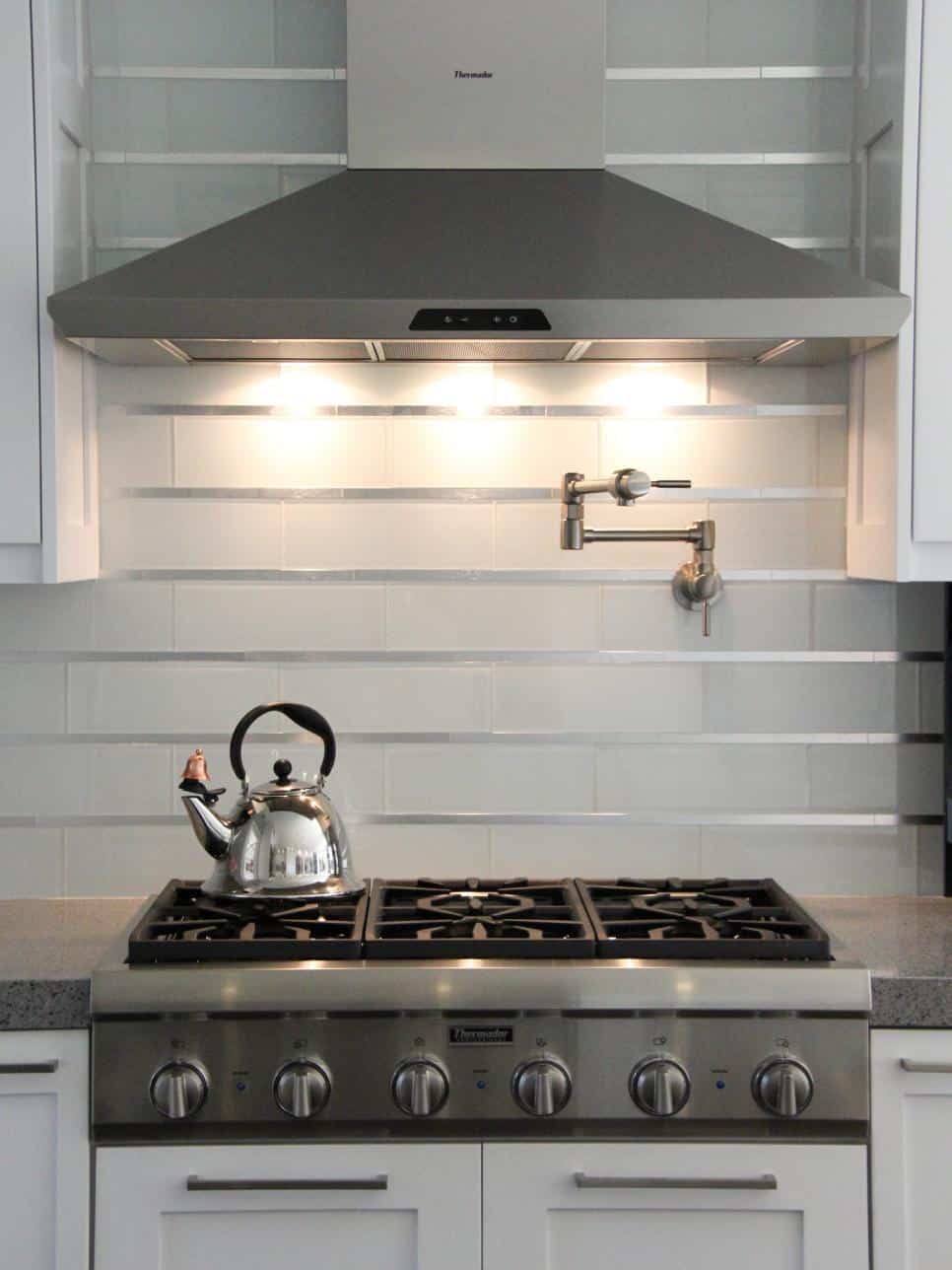
Maintenance is another significant benefit of metal kitchen backsplashes. Cleaning metal surfaces is generally straightforward and does not require special cleaners. A simple wipe with a damp cloth and mild detergent is usually sufficient to keep the backsplash looking pristine. This ease of maintenance is particularly appealing to those who lead busy lives and prefer to spend less time on household chores. Moreover, the non-porous nature of metals means they do not harbor bacteria or mold, contributing to a healthier kitchen environment.
The versatility of metal backsplashes allows for a range of design possibilities. They can be custom-cut to fit any space and can include various textures and patterns. For example, brushed stainless steel provides a subtle, matte finish that hides fingerprints, while polished stainless steel offers a high-shine look that adds a touch of elegance. Copper backsplashes can be hammered for a rustic appearance or left smooth for a more contemporary feel. This versatility makes it easy to match a metal backsplash with your kitchen’s overall design, whether it’s modern, traditional, or industrial.

Installation of a metal kitchen backsplash can be relatively simple, especially when compared to other materials like tile or stone. Many metal backsplashes come in large sheets that can be adhered directly to the wall, reducing the need for grouting or extensive preparation. This not only speeds up the installation process but also minimizes the disruption to your daily routine. For those who prefer a DIY approach, metal backsplashes are often easier to handle and cut than heavier materials, making them an accessible option for home improvement enthusiasts.
In addition to their practical benefits, metal kitchen backsplashes can significantly enhance the visual appeal of a kitchen. The reflective properties of metals can make a small kitchen appear larger and brighter by bouncing light around the space. This can be particularly beneficial in kitchens with limited natural light. Furthermore, the sleek, clean lines of a metal backsplash can create a modern, sophisticated look that appeals to many homeowners. Whether you choose the cool tones of stainless steel or the warm glow of copper, a metal backsplash can become a focal point in your kitchen design.
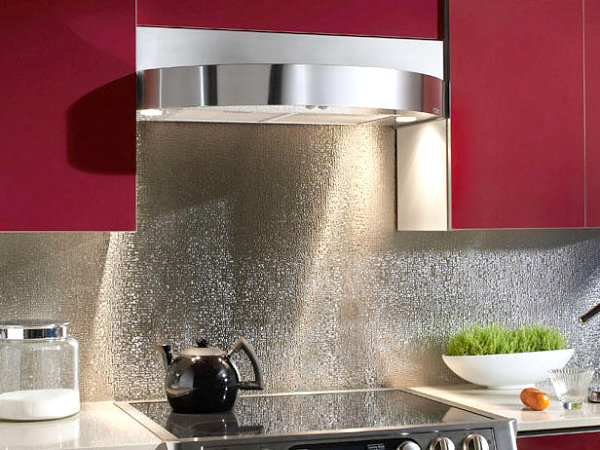
One often overlooked advantage of metal backsplashes is their compatibility with various kitchen appliances and fixtures. Stainless steel backsplashes, for example, pair seamlessly with stainless steel appliances, creating a cohesive and unified look. This can make your kitchen appear more polished and well-thought-out. Similarly, copper backsplashes can complement copper pots, pans, and other kitchen accessories, adding a sense of harmony to the space.
In terms of cost, metal kitchen backsplashes can vary widely depending on the material and design. Stainless steel is generally more affordable than copper but still offers excellent durability and aesthetic appeal. Copper tends to be more expensive, particularly if you opt for custom designs or finishes. However, the long-term benefits and durability of metal backsplashes often justify the initial investment. It’s important to consider not just the upfront cost but also the longevity and maintenance savings when choosing a backsplash material.
Customization options are plentiful with metal kitchen backsplashes. Homeowners can choose from a range of finishes, patterns, and textures to create a unique look. For instance, you might opt for a quilted stainless steel pattern for added visual interest or a smooth, mirrored finish for a sleek, modern touch. Copper backsplashes can be customized with various patinas and finishes, allowing you to achieve a specific look that complements your kitchen decor. This level of customization ensures that your backsplash is truly one-of-a-kind.
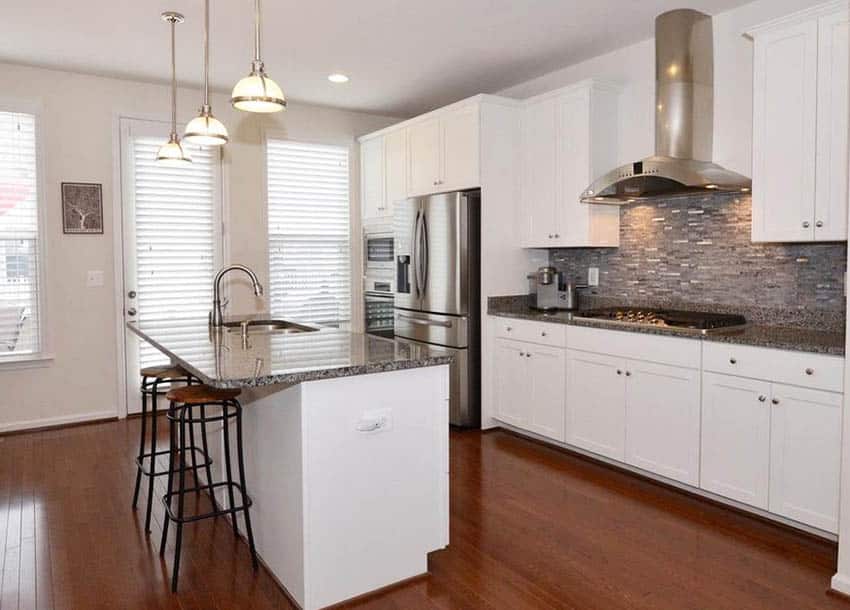
Environmental considerations are also worth noting when it comes to metal kitchen backsplashes. Many metals, such as stainless steel and aluminum, are recyclable, making them an eco-friendly choice. Choosing a metal backsplash made from recycled materials can further reduce your environmental impact. Additionally, the durability of metal backsplashes means they are less likely to need replacement, reducing waste over time.
Metal backsplashes can also contribute to improved kitchen hygiene. The non-porous nature of metals prevents the absorption of spills and splatters, making it easier to clean and sanitize the surface. This is particularly important in areas behind the stove or sink, where food particles and liquids are more likely to come into contact with the backsplash. A quick wipe down with a disinfectant can keep your kitchen free of harmful bacteria and germs.
In terms of style, metal kitchen backsplashes can be incredibly versatile. They can complement a wide range of design aesthetics, from sleek and modern to rustic and traditional. For example, a brushed stainless steel backsplash can add a contemporary edge to a minimalist kitchen, while a hammered copper backsplash can bring warmth and character to a farmhouse-style kitchen. This versatility makes metal backsplashes a popular choice among interior designers and homeowners alike.
Finally, a metal kitchen backsplash can add value to your home. Kitchens are one of the most important areas in a home when it comes to resale value, and a stylish, durable backsplash can make a significant impact. Potential buyers often appreciate the aesthetic appeal and practicality of a metal backsplash, which can make your home more attractive on the market. Investing in a quality metal backsplash can be a smart move for both your immediate enjoyment and long-term financial gain.
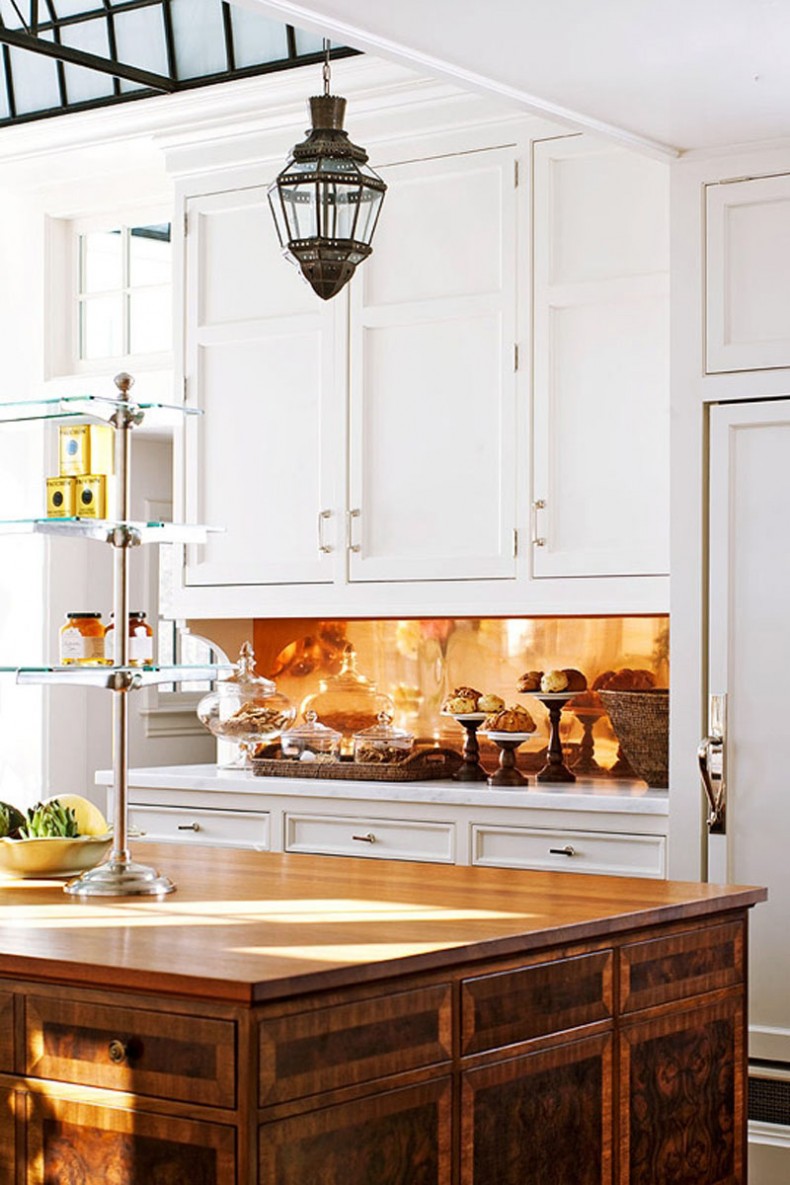
Common Mistakes to Avoid
When installing a metal kitchen backsplash, there are several common mistakes to avoid. One major mistake is not properly measuring the space. Accurate measurements are crucial to ensure that the metal sheets fit perfectly and look seamless. Always double-check your measurements and allow for any fixtures or outlets that may need to be cut around.
Another common mistake is choosing the wrong type of metal for your needs. Different metals have different properties, and it’s important to select one that suits your kitchen environment and aesthetic preferences. For example, stainless steel is great for a modern look and high durability, while copper offers a unique, warm appearance but requires more maintenance.
Improper surface preparation is another frequent error. The wall surface should be clean, dry, and free of any debris before applying the metal sheets. Failure to properly prepare the surface can lead to poor adhesion and an uneven finish. Taking the time to thoroughly clean and smooth the wall will help ensure a successful installation.
Using the wrong adhesive can also lead to problems. Not all adhesives are suitable for metal backsplashes, and using an inappropriate product can result in the metal not sticking properly or even damage the wall. It’s important to use an adhesive that is specifically designed for metal applications to ensure a secure and lasting bond.
Neglecting to account for the expansion and contraction of metal is another common mistake. Metals can expand and contract with temperature changes, and failing to leave a small gap for this movement can cause the backsplash to warp or buckle over time. Allowing for a slight gap around the edges can accommodate this natural movement and maintain the integrity of the installation.

How do I clean and maintain a metal kitchen backsplash?
Cleaning a metal kitchen backsplash is generally straightforward. For daily cleaning, use a damp cloth with a mild detergent to wipe down the surface. For more stubborn stains or grease, a mixture of vinegar and water can be effective. Avoid using abrasive cleaners or scrubbing pads, as they can scratch the metal surface. Regular maintenance ensures that the backsplash remains shiny and free of spots.
Is a metal kitchen backsplash heat-resistant?
Yes, most metal kitchen backsplashes are heat-resistant. Stainless steel, in particular, can withstand high temperatures, making it an excellent choice for areas behind stoves and ovens. However, it’s important to ensure that the backsplash is properly installed and secured to avoid any movement or warping due to heat exposure.
Can I install a metal kitchen backsplash myself, or do I need professional help?
Many metal kitchen backsplashes are designed for easy DIY installation. They often come with detailed instructions and all necessary materials. However, if you are not comfortable with cutting metal sheets or working with adhesives, it may be beneficial to hire a professional to ensure a precise and secure installation.
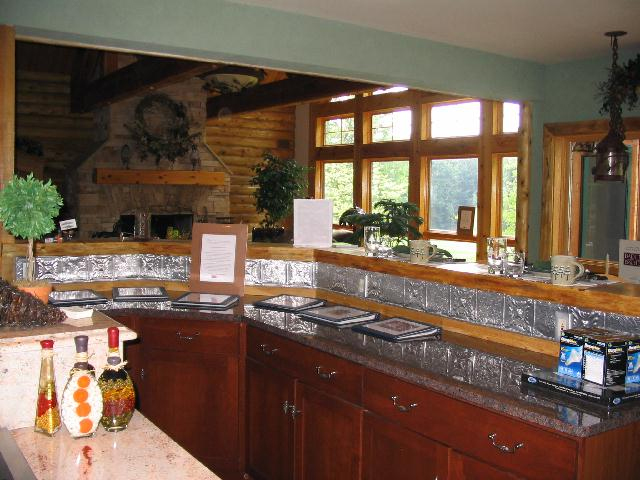
What types of metals are available for kitchen backsplashes?
The most common metals used for kitchen backsplashes are stainless steel, copper, and aluminum. Stainless steel is popular for its durability and modern look. Copper is chosen for its warm, unique appearance and the natural patina it develops over time. Aluminum is lightweight, versatile, and often more affordable, making it a good option for budget-conscious homeowners.
Will a metal kitchen backsplash rust over time?
Stainless steel and aluminum are resistant to rust and corrosion, making them ideal choices for kitchen backsplashes. Copper does not rust, but it does develop a natural patina that can change its appearance over time. Proper maintenance and cleaning can help prevent any unwanted changes and keep the metal looking its best.
How do I choose the right metal kitchen backsplash for my home?
Choosing the right metal kitchen backsplash depends on several factors, including your kitchen’s design, your budget, and your maintenance preferences. Consider the overall style of your kitchen and select a metal that complements it. Think about how much maintenance you are willing to perform, as some metals require more care than others. Finally, consider your budget and choose a metal that offers the best balance of aesthetics, durability, and cost.

Blue glass mosaic sheets stainless steel backsplash crackle crystal glass tiles
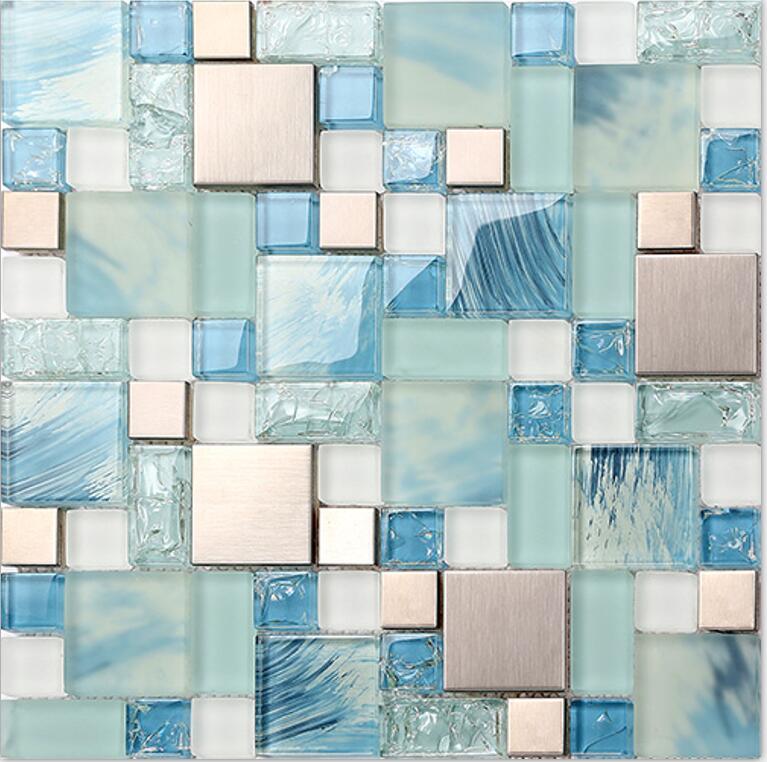
Metal tiles kitchen backsplash

Stainless steel backsplash

Modern White Gray Subway Marble Backsplash Tile
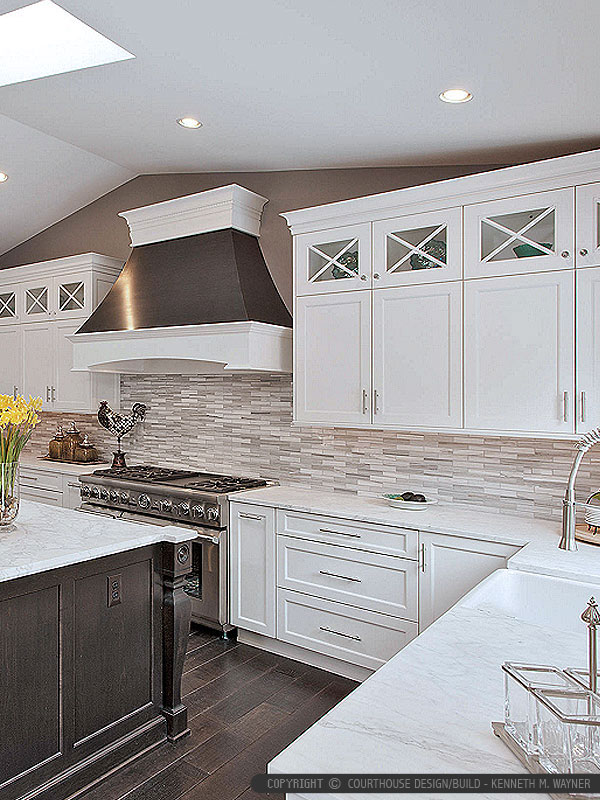
Related Posts:
- Self Adhesive Kitchen Backsplash Tiles
- Metal Backsplashes For Kitchens Home Depot
- Cheap Easy Backsplashes Kitchens
- Kitchens With Granite Countertops And Tile Backsplash
- Subway Style Kitchen Backsplash
- Blue Green Kitchen Backsplash
- Kitchen Backsplash Decals Stickers
- Inexpensive Kitchen Backsplash Tiles
- Off White Subway Tile Kitchen Backsplash
- Marble Kitchen Backsplash Tile